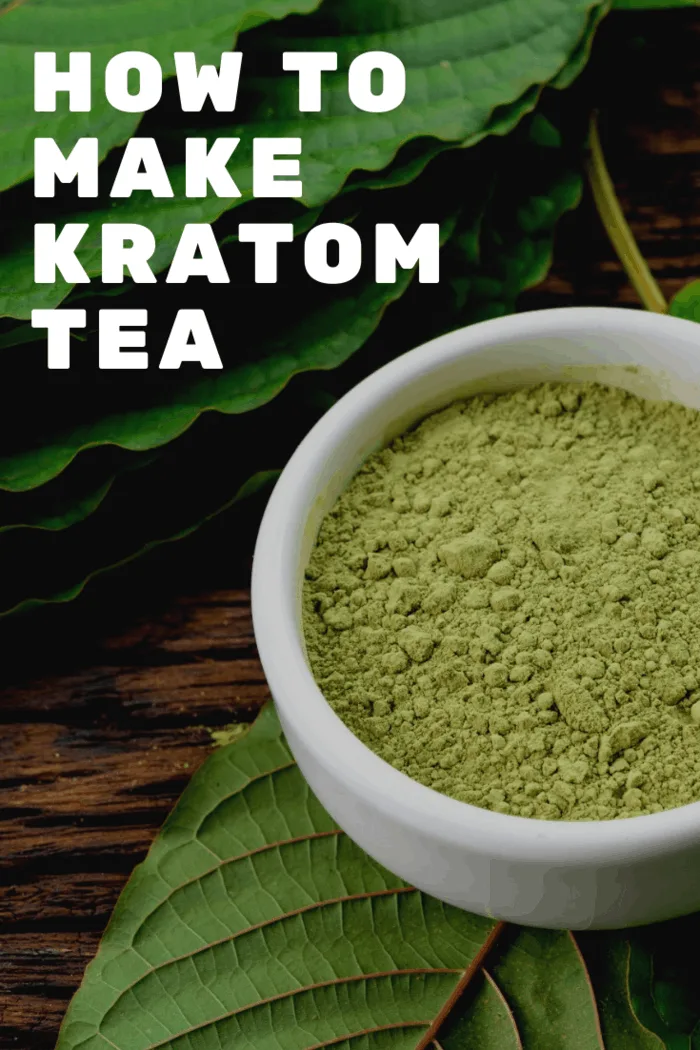Kratom is a tropical tree native to Southeast Asia, and its leaves have been traditionally used for various purposes. We’ll show you how to use kratom powder with five delicious steps to tasty (and safe) kratom tea.
Have you heard about the power of kratom for pain relief — but then failed to try it because the taste was so disgusting?
You’re in the right place.
While kratom doesn’t taste good when it’s taken alone or mixed into a smoothie, it can be made much more palatable when prepared as a tea.
Not sure where to start?
Keep reading for a step-by-step guide on how to use kratom powder to make tea.

How to Use Kratom Powder: 5 Steps to Tasty (and Safe) Kratom Tea
Bring Water to a Gentle Boil
This process can be used to prepare tea to drink right away or to store for later. Use a large pot if you want to make a big batch for the next few days.
Bring your water to a boil, but don’t add the kratom just yet. If you boil water with the kratom added, you’ll lose some of the pain-relieving properties.
Once the water is boiling, turn the heat down to keep it simmering gently.
Add Kratom and Simmer
Next, add your kratom to the pot and simmer for 10 – 20 minutes, making sure the water doesn’t start to boil too aggressively. The longer you steep your tea, the stronger the finished product will be.
Leaves are handy because they’re easy to strain and can be saved and used again, but kratom powder also works just fine.
If it’s your first time trying kratom, be sure to check how much the supplier recommends taking and err on the side of caution.
Pour Through a Strainer
Once your tea has finished simmering, you’ll need to pour it through a strainer, preserving all the goodness but removing the actual plant matter.
If you’ve used leaves, you can pour the tea straight through a regular strainer.
If you used powder, wait for it to settle at the bottom of the tea and then pour through a narrow strainer, leaving as much powder behind as possible.
You might need to strain the mixture several times to get a perfect, smooth brew.
Add Sweetener and Enjoy
Your kratom tea is ready, but it still won’t taste amazing. To make it more pleasant, try adding a sweetener of your choice, to taste.
You could use sugar, maple syrup, agave nectar, or honey. For a little extra flavor, try throwing in a slice of orange or lemon.
If hot tea isn’t your thing, pop the liquid in the fridge, then serve over ice with plenty of lemon and a little sugar.
You’ve now got a delicious kratom tea, ready to enjoy!
If this all feels like too much effort for regular use, check out Kratom Monkey to purchase kratom in capsule form.
What are the Benefits of Kratom?
Kratom is a plant that has been traditionally used in Southeast Asia for various purposes. While there are anecdotal reports of potential benefits, it’s important to note that scientific research on kratom is limited, and the FDA has not approved it for any specific medical use.
Here are some potential benefits associated with kratom, as reported by users:
- Pain Relief: Kratom may have analgesic properties and could potentially help alleviate pain. Some individuals use it as a natural alternative for managing chronic pain conditions.
- Mood Enhancement: Kratom has been reported to provide a sense of euphoria and improve mood. It may have the potential to uplift spirits and promote feelings of well-being.
- Energy and Focus: Certain strains of kratom, particularly those with stimulating properties, have been used to boost energy levels, enhance focus, and increase productivity.
- Relaxation and Stress Relief: Some users report that kratom can induce a state of relaxation and help reduce stress and anxiety. It may have a calming effect and promote a sense of tranquility.
- Opiate Withdrawal Support: Kratom has been explored as a potential aid for individuals experiencing opioid withdrawal symptoms. Its interaction with opioid receptors may help alleviate withdrawal symptoms, although more research is needed in this area.
It’s important to approach these reported benefits with caution, as the scientific evidence supporting them is limited. Furthermore, the effects of kratom can vary depending on the strain, dosage, and individual factors. It’s advisable to consult with a healthcare professional before considering kratom use, especially if you have any underlying health conditions or are taking medications.
It’s also worth noting that kratom can have potential risks and side effects, including nausea, constipation, drowsiness, addiction, and interactions with other substances. Responsible use and adherence to dosage guidelines are essential.
The legality of kratom varies across countries and regions, so it’s important to be aware of the legal status and regulations regarding its use in your specific location.
How to Use Kratom Powder for Pain Relief
Want to know how to use kratom powder for pain relief?
As with any new herbal remedy or medication, it’s smart to get advice from a professional first.
Start with a small amount, see how your body reacts, and then increase the dose as necessary. If you experience any negative side effects, seek medical help.
In the mood to test out new drinks? Check out our recipe section today.
